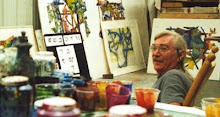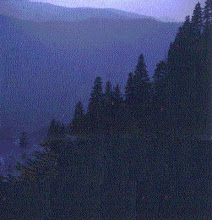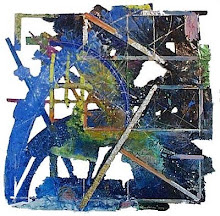- for my drawing students
It’s simple, really
we look
we listen
we draw upon
our looking and listening
each day
alone, together
in our pool of light and shadow:
these mountains, these rivers
our selves
where form is never more
than the revelation of content
leaning into the light
leaning into the dark
listening
to where the singing comes from,
ardent, longing,
as a river that knows
where it’s going.
SEEING, CREATING
- to be read to my students in drawing class
Seeing, creating,
it is an endless quest
for it is going nowhere in space or time,
only deeper into the presence.
There is grace in this.
It is the grace of knowing
that our consciousness and the light
are always arriving in this world
together.
Hello!
These two poems were written for a college course I taught long ago. They were meant to introduce my students to a skilled way of knowing that in important ways was already their own. I was introduced to it by a teacher even longer ago, and he by his teacher before that. This lineage is old, very old, at least as old as the painters of the Lascaux caves. But the skills and issues it raises are still relevant - more crucially so these days than ever (1).
What could it mean to draw from our own true nature? After all, what is our true nature? It is a deep and often troubling question. For a long time now we seem to always be at war with ourselves and each other over it. Now the question of our very survival as a species questions what it means for us.
Drawing from our own true nature is a way of knowing:
- soaked in the senses, all of them - the six listed in textbooks as well as all the others that hover ephemerally along the edges of our consciousness.
- never opposed to any of them and never detaching itself from the lived experience of breathing, smelling, touching, feeling, seeing.
- that happens in an experienced place, not a generalized space, but a specific place centered all about you. It is a center in which not only you move, but everything else does too. A consciousness moves and connects through this experience.
- not dependent on concepts, facts, or perspective. It is a knowledge that emerges from the personal process of living through the body. It is embodied knowledge. We all have it. We always have.
When I say we can draw from our own true nature I am implying much more than a nature we own or possess by ourselves. I am saying it is much more than even ours. What is drawn from the yearning line along the edges of a beech tree is also drawn out from within us and our own lives. What is drawn from a tree, a leaf, a stone, a cloud, a river, is also drawn from within us - and it is one contiguous line. Nature speaks to us and our inner nature replies. This line is where our own true nature leads us home - to ourselves and to the world.
Eye and hand and heart connect. Knowing courses through this as a river. It is not forgetting what we think we know, or what we’ve been told or taught. It is only a setting aside of this while we attend and connect. All that other is still ours, but comes back to us reshaped, tempered by what we truly know by touch and feel, seeing and listening. I can say it draws to us our own true nature because it draws from a nature that is all around us, of which we are each very much part, and which is very much part of us. We are in dire need of this re-centered perspective today. The natural world we were bequeathed writhes in rejection of what we have done to her: the toxic air and water, the injection of CO2 to cripple the subtle equilibrium of life enabling climate, massive deforestation upsetting weather patterns and the global water cycle, vast petrochemical agriculture that has sterilized that top six inches of top soil so teeming with life.
If this was just a way to delight in the senses and in the body, it would only be self limiting, delusional hedonism. But drawing from our own true nature is not navel gazing. It is engagement with the world. Our body of senses inhabits the larger world, and is in constant and permeable dialogue with it. The world, reality, our senses, our individual selves, are all tuned to, shaped for, developed for this one song that is Creation. We are all its music, part of its line. None of us - stone, star, wind, or child, is separate, dominant, or different. Each one of us, like each stone in the river, carries the shape worn by the moving river of life. We carry the shapes of this in all our yearnings, hopes, dreamings, loves, and fears. Touch, smell, listening, feeling, seeing - they are all reciprocal - a conversation of exchange. We touch and are thereby touched by. We see and are seen by. And perhaps at the farthest reach of conjecture we are even thought by.
To draw from a stone in the river is to draw on that intimate and vital conversation - the world inside us is the inside of nature. This turns our accustomed perspective inside out. We in the modern western world got it all very wrong when we split the conscious from the unconscious, when Descartes split res extensa from res cogitans. We have forgotten the “con” in consciousness - the “with” of it. We did get lovely highways with scenic overlooks, Walmarts, behemoth medical and military industries, a hierarchical social structure of power, oppression and privilege. But we also acquired the loss of nature and with that some important loss within ourselves of something essential to our very human potential (2).
So, how do we do this - draw from our own true nature? It begins as simply as my opening poem presents. And if you have been wondering all along what strictly I might have meant by “drawing,” I’ve meant just as precisely among all the meanings - pick up a stick of charcoal (willow is the best) (3), and draw! Draw me the Creation! (4) It will connect your mind, your eye, your touch, your heart in a way that makes real sense. It’s a river that knows where it’s going. I’ll meet you there.
NOTES:
1. Climate change, global warming, the sixth great extinction of species we are entering now, will, like dominoes, change much of what we think we know - socially, politically, economically, religiously, spiritually. It’s not as if we’ll just adjust our summer fashions to suit the change of weather.
2. There is a long shelf of books on this alienation. If I were to arrange the most contemporary ones I would start on the left with Rachel Carson’s Silent Spring (1962) and on the far right Bill McKibben’s 2006 book The End of Nature. and somewhere In the middle would be David Abram’s The Spell of the Sensuous (1997), along with Joan Halifax’s The Fruitful Darkness (1993).
3. Cut from the dead branch of a willow you know along a river you know, and charred.
4. As a poet I know how words can follow a line too. I take this, and have adapted it, from Venerable Bede’s 7th century biography of Caedmon, the first English poet we know by name. Caedmon was at dinner one night with friends. Afterwards, as the harp was being passed around for each guest to offer a song, embarrassed by his lack of skill, he excused himself to look after the animals. In the barn he fell asleep, and in a dream an angel came to him and said “Caedmon sing me the Creation” (in the Anglo-Saxon: “Caedmon sing me Frumsceaft!”). And so, in his dream he did, going the next day to a nearby monastery to ask for it to be written down - and so began the long line of written English lyric poetry.













Great stuff, Laurence. The photos are primordial.The verse flows deep.
ReplyDeleteI'm captivated by the white glyphs on the rocks.They fit within the forest.